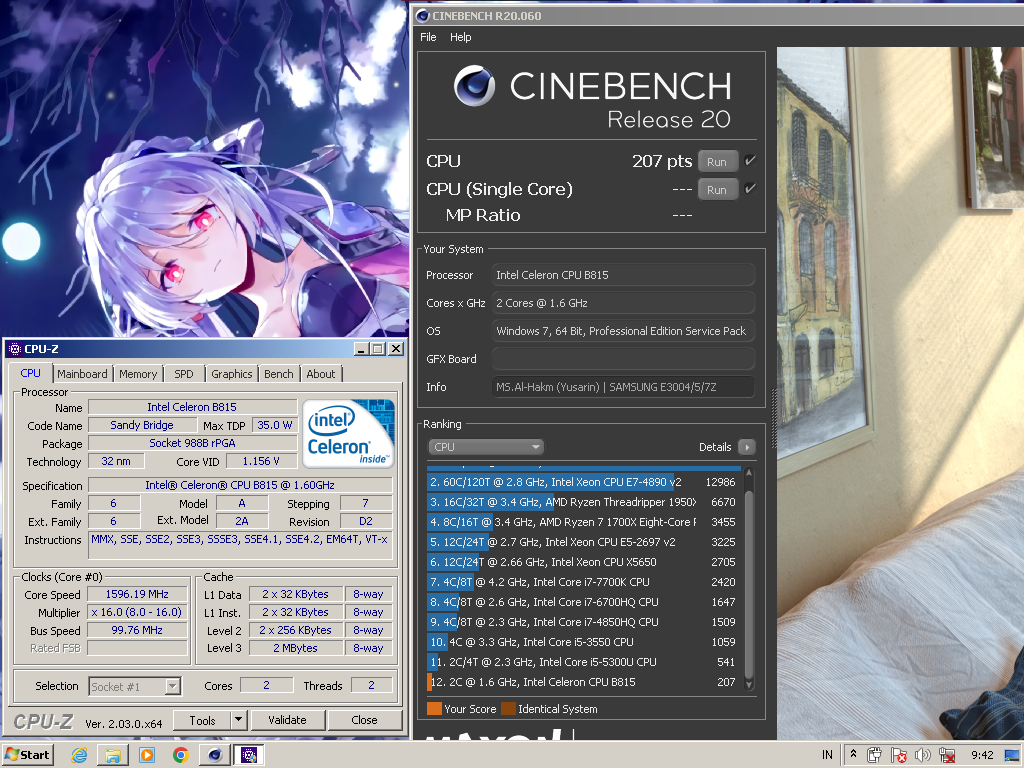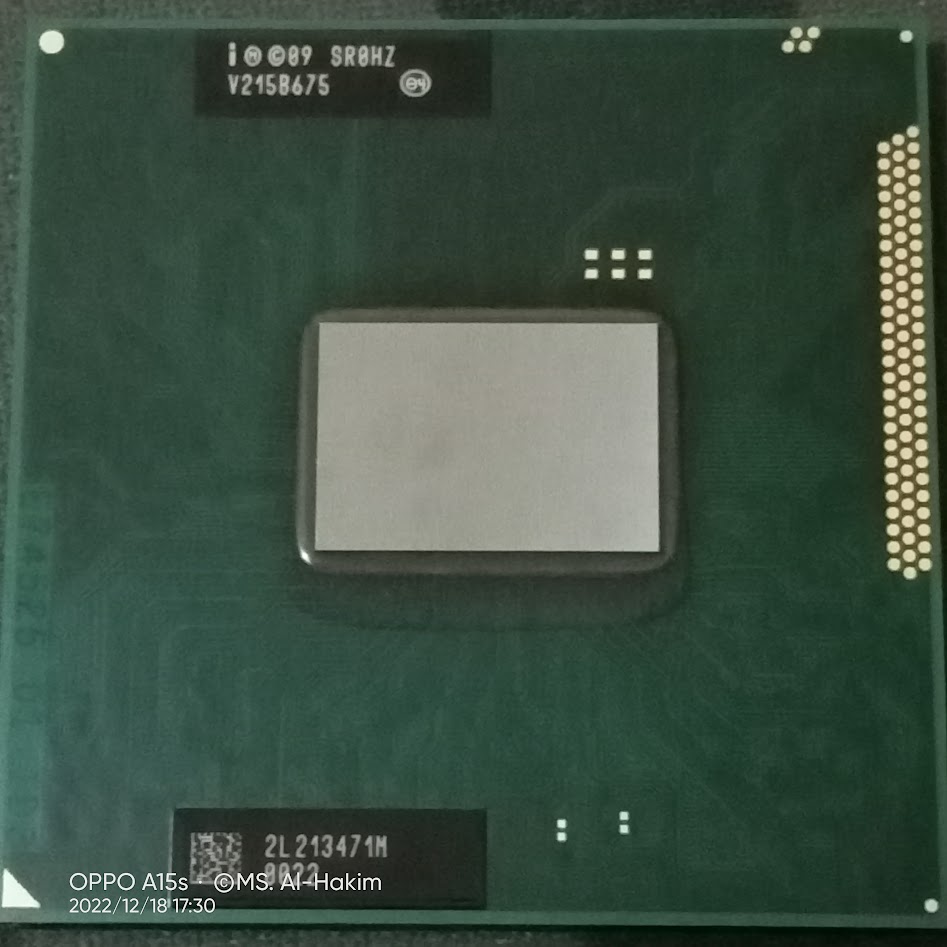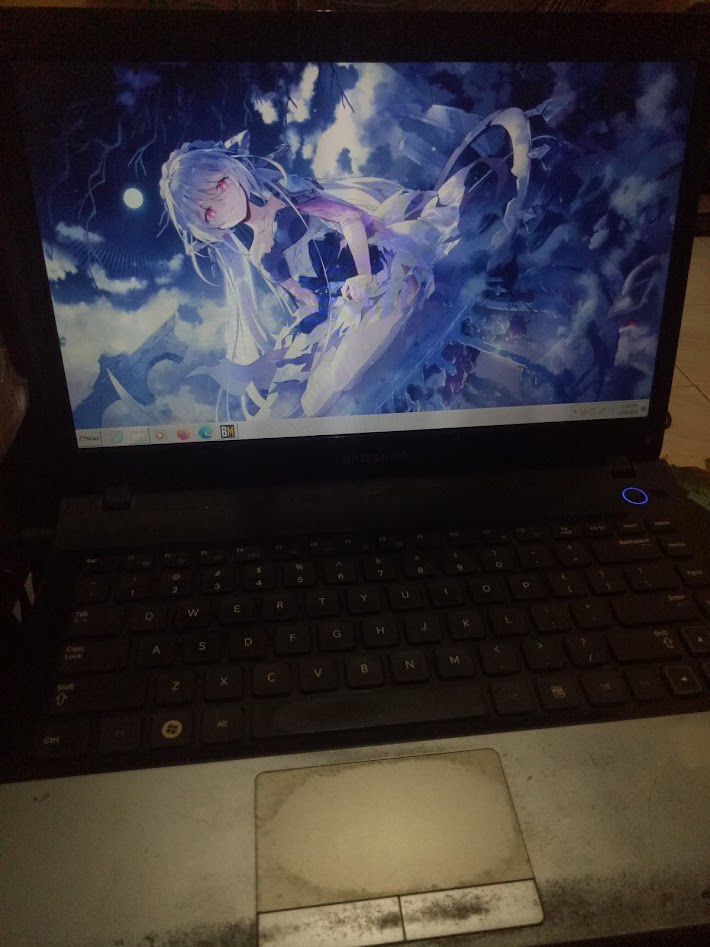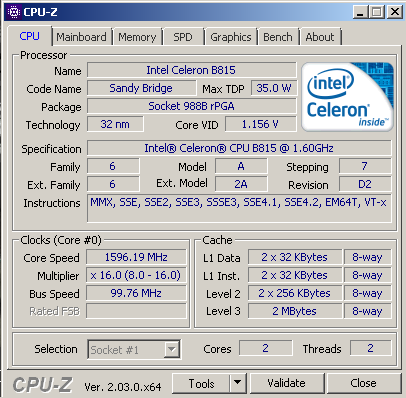Cinebench - R20 score 207 pts with a Celeron B815
Monday, 21 November 2022 19:42 | Update at 2 years ago
Media Gallery
Screenshot

Device, Setup, etc



URL
https://hwbot.org/submission/5127195http://bit.ly/3V1egJc
Information Detail
Hardware: Intel Celeron B815
Specs:CPUID : Intel(R) Celeron(R) CPU B815 @ 1.6GHz
Architecture : x86
Codename : Sandy Bridge
L3 Cache : 2MB
Clock : 1.6GHz
Core/Thread : 2/2
TDP : 35W
Technology : 32nm
Socket : FCPGA988
IGPU : Intel HD Graphics Mobile Gen 2 (Sandy Bridge)
See more specification...
Software: Cinebench - R20
Score: 207 pts
About: Cinebench - R20Cinebench R20 is one of the most popular CPU benchmarks developed by Maxon, the company behind the professional 3D animation software Cinema 4D. This benchmark is designed to test processor performance in complex photorealistic rendering scenarios, utilizing the latest rendering engine from Cinema 4D Release 20. Cinebench R20 provides a more demanding and realistic test compared to previous versions like R15, making it a relevant benchmark for modern systems and processors.
In this test, the system is designed to render a high-quality 3D scene that utilizes various advanced rendering techniques, such as global illumination, area shadows, physical materials, and full CPU utilization down to the smallest cores and threads. Cinebench R20 requires more memory, processing power, and longer render times, providing a more accurate representation of a processor's real-world performance, especially in demanding tasks like rendering, video editing, and 3D simulation.
Unlike previous versions, Cinebench R20 does not include GPU/OpenGL testing, so its primary focus is purely on the CPU's ability to handle multi-threaded workloads. The resulting scores are presented in points (pts), where higher values indicate the CPU's ability to complete rendering processes faster and more efficiently. This is crucial for content creators, designers, and professional users looking to select the best CPU for their productivity needs.
Cinebench R20 has become an industry standard for reviewers, overclockers, and technicians in objectively and consistently testing CPU performance. With workloads that reflect real-world scenarios and optimizations for modern processors, this benchmark remains one of the most important tools for evaluating and comparing system performance in depth.
The Intel Celeron B815, released in 2012, is an entry-level mobile processor based on the Sandy Bridge architecture. Designed for budget laptops, it features 2 cores and 2 threads with a fixed clock speed of 1.6 GHz. The processor does not support Turbo Boost or Hyper-Threading, limiting its multitasking capabilities.
Manufactured using 32nm process technology, the Celeron B815 has a TDP of 35W, which is relatively high for a low-end mobile CPU. This higher thermal output typically results in shorter battery life and more heat generation compared to modern low-power processors.
For graphics, the processor is equipped with Intel HD Graphics 2000, which runs at a base frequency of 650 MHz and can boost up to 1.0 GHz. While not suitable for gaming, this integrated GPU handles basic visual tasks like 720p video playback, simple animations, and light graphical workloads adequately.
In everyday usage, the Celeron B815 performs best with lightweight applications such as web browsing, word processing, and playing standard-definition videos. However, it struggles with modern operating systems, multitasking, and heavier workloads due to its limited core/thread count and lack of advanced CPU features.
Hardware Detail:
Device: SAMSUNG 300E4Z
RAM: 4GB DDR3 Dual Channel
OS: Windows 7
* Not Avaiable
